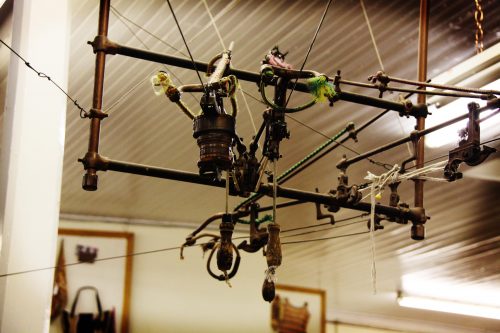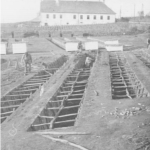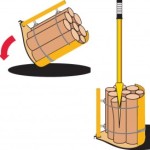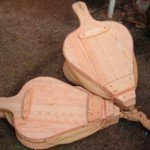“Drug smugglers trying to get marijuana across the Arizona-Mexico border apparently are trying a new approach – a catapult. National Guard troops operating a remote video surveillance system at the Naco Border Patrol Station say they observed several people preparing a catapult and launching packages over the International Border fence last Friday evening.” Read & watch.
Drug Catapult Found at US-Mexico Border
Judging Technology
Ran Prieur started an interesting initiative: TechJudge, in which a rating system is applied to different technologies.
“In this age, ‘judging technology’ means one of two things: reviewing a particular tool for how well it satisfies the consumer, or doing deep thinking about Technology as a whole. I don’t think there’s any such thing as ‘technology’. Every tool, every system of tools, every use of every system of tools, is a different animal. And instead of judging a clothes dryer for how well it dries your clothes compared to another clothes dryer, we should also judge it for how it affects the meaningfulness of your life, the society it is part of, and the rest of life on this planet. The goal of this page is to inspire deep thinking about particular technologies.”
For now, only the transportation section has been (partly) filled in. The “passenger dragon” (which scores the maximum of 100 points) left me a bit confused, but here are the preliminary results for the more common transport means:
- sailboat 85 – 74,
- horse 79 – 70
- bicycle 77 – 63
- private jet 58
- airliner 45
- passenger train 44 – 30
- automobile 25
Note that energy use and ecological damage are not the only criteria.
Ten Reasons Why Jatropha is Neither a Profitable nor a Sustainable Investment
-
Jatropha does not guarantee high returns
- Jatropha does not thrive on marginal land
- Jatropha needs significant amounts of water
- Jatropha is not pest resistant
- Many jatropha investment projects have failed
- Jatropha competes with food production
- Jatropha causes displacement of local communities
- Jatropha plantations are not pro-poor
- Jatropha plantations negatively impact biodiversity
- Jatropha is likely to increase carbon emissions
Jatropha: money doesn’t grow on trees (.pdf), a report by Friends of the Earth. Via Energy Bulletin. Previously.
Shoemakers of the World
“These 10 videos focus on the artisans around the world still making shoes by hand. From Mexico to Japan: we’ll take a look at how different shoes, slippers and sandals are made.”
Cash Ropeway in South Africa
Low-tech Magazine editor Shameez Joubert spotted this cash ropeway in Grahamstown, South Africa.
Cash ropeways were used in shops from the 1880s to the 1960s. They worked in a similar manner to large-scale cargo ropeways. Bicable cash transportation systems were powered by a catapult device or by separation of the wires, monocable systems were operated by a small electric motor.
The Cash Railway Website is dedicated to cash ropeways and similar systems, but it does not mention any ropeway still in use. The system in the South African shop was installed in the 1960s and it still works. Thank you, Shameez!
Know Your Bolts
Makezine points to this printable poster that displays all the different bolts and nuts and connectors along with their official names (and instructions on how and when to use them). All bolts – except for the Pentalobe screw (more).







